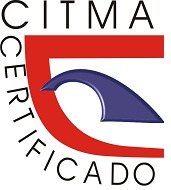Visitors
Submissions
Submission Preparation Checklist
As part of the submission process, authors are required to check off their submission's compliance with all of the following items, and submissions may be returned to authors that do not adhere to these guidelines.- The submission has not been previously published, nor is it before another journal for consideration (or an explanation has been provided in Comments to the Editor).
- The submission file is in OpenOffice, Microsoft Word, or RTF document file format.
- Where available, URLs for the references have been provided.
- The text is single-spaced; uses a 12-point font; employs italics, rather than underlining (except with URL addresses); and all illustrations, figures, and tables are placed within the text at the appropriate points, rather than at the end.
- The text adheres to the stylistic and bibliographic requirements outlined in the Author Guidelines.
Review papers
In this section, works that examine the state of the art or study the situation of a particular subject are published, aiming to analyze the advances and development trends, as well as the insufficiently studied aspects. Its structure includes: introduction, methodology, development (with subtitles for each topic), conclusions and references. Review articles can be commissioned by the journal's Editorial Board and are peer-reviewed.
Originial paper
In this section, works are published that show, in detail, the results of completed research or new speculations in the thematic lines of the journal. The original articles are structured according to the IMRyD format (introduction, methodology, results and discussion, conclusions and references) and are subject to peer review.
Brief communications
In this section, descriptive or retrospective studies are published that report preliminary or partial research results, which require rapid dissemination. They are contributions of smaller scope and extension than the original articles; but its structure is also made up of: introduction, methodology, results and discussion, conclusions and references. Short communications are peer-reviewed.
Case studies
This section publishes papers that describe and analyze the behavior, results, and technical and methodological experiences observed in one or several cases of interest. The case studies are composed of: introduction, methodology, development (with subtitles for each topic), conclusions and references. They are peer reviewed.
Reflection paper
The reflection article is defined as a document that presents the results of finished research from an analytical, interpretive or critical perspective of the author on a specific topic.
Copyright Notice
Authors retain all copyrights and grant the journal the right to be the first to publish the work. Journal´´ contents are distributed under a Creative Commons Attribution-NonCommercial 4.0 license. This means that its copying and distribution by any means is allowed, as long as it maintains the recognition of its authors and no commercial use is made of the works.
Articles published prior to July 2021 remain with the Creative Commons Attribution 4.0 license (CC BY 4.0).
Authors are allowed and encouraged to disseminate their work online (eg, in institutional repositories or on their website) before and during the submission process, which can lead to exciting exchanges and increase citations of the work published. In this case, the authors are requested to indicate in the header of the manuscript: "This is a preprint version sent to the Cuban Journal of Digital Transformation https://rctd.uic.cu/rctd"
Privacy Statement
The names and email addresses entered in this journal site will be used exclusively for the stated purposes of this journal and will not be made available for any other purpose or to any other party.
The identity of the authors of the manuscripts received will be made public until their publication, if accepted. The identity of the authors of the rejected manuscripts will also be preserved.
During the review process, the manuscripts will not be used for any other purpose, and will be made public at the time of publication. Rejected manuscripts will be archived in the historical record of the editorial and publication management system used by the journal, and may not be used for any purpose other than the one for which they were sent.












